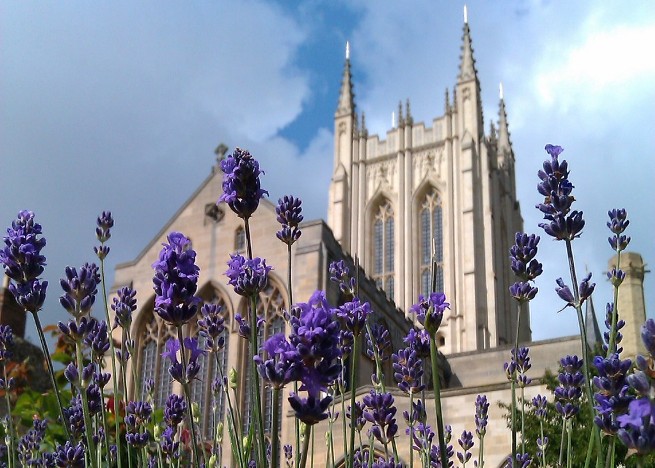 Bury St Edmunds Abbey
Bury St Edmunds Abbey Greene King Brewery Visitor Centre
Greene King Brewery Visitor Centre Ickworth House, Park & Gardens
Ickworth House, Park & Gardens Kids Play
Kids Play Mildenhall Museum
Mildenhall Museum Moyse's Hall Museum
Moyse's Hall Museum Nowton Park
Nowton Park Pakenham Water Mill
Pakenham Water Mill  St Edmundsbury Cathedral
St Edmundsbury Cathedral Suffolk Regiment Museum
Suffolk Regiment Museum  The Malthouse Project
The Malthouse Project  Theatre Royal
Theatre Royal West Stow Country Park and Anglo-Saxon Village
West Stow Country Park and Anglo-Saxon Village Woolpit and District Museum
Woolpit and District Museum Wyken Hall Gardens and Wyken Vineyards
Wyken Hall Gardens and Wyken Vineyards
Bury St Edmunds was once the place where the Saxon kings resided, and a monastery was founded during the 7th century on the site of the present day abbey remains. When Abbot Baldwin began building the Norman abbey church in the latter part of the 11th century, he also built a new church for the use of the townspeople. In less than 50 years, the parish church dedicated to St Denis had been demolished to make way for the enlargement of the abbey church, and a new parish church dedicated to St James was built on the site of the present St Edmundsbury Cathedral. Details of this Norman church are scarce but it is known that the chancel was rebuilt at the turn of the 14th century, and work on remodelling the nave began early in the 16th century. Throughout the next 400 years the building underwent several structural changes and, eventually, at the hands of Sir Gilbert Scott, St James's took its final shape as a parish church in the 1870s.
In 1914 the new diocese of St Edmundsbury and Ipswich was created and the lovely parish church became St Edmundsbury Cathedral. Unlike the vast medieval cathedrals, formerly the grand abbey churches of monastic foundations, St Edmundsbury Cathedral presents a far less imposing feature on the high street of this Suffolk market town.The long, rectangu
No Comments Yet - Why not be the first to leave a comment
Every effort is made to make sure that all the information is correct but we strongly recommend that you call St Edmundsbury Cathedral before you set off on your day out to confirm opening times and admission prices.
Please also note that the position on Google maps for St Edmundsbury Cathedral is a rough estimate using their postcode in the database and might be slightly out.
It may also be worth clicking the web link for St Edmundsbury Cathedral to see if there are any special events coming up or currently on.